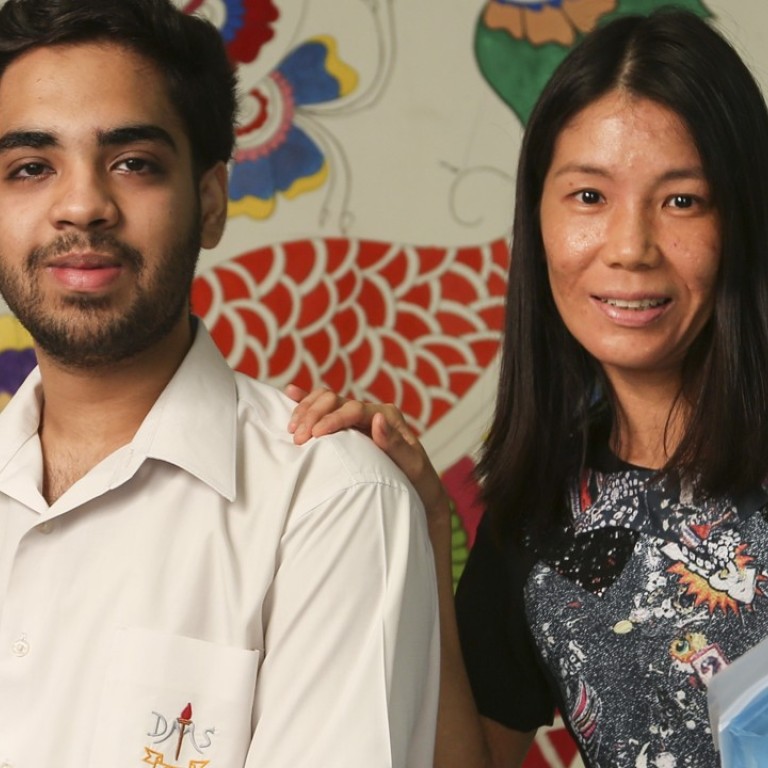
From wild guesses to an ‘A’ in Chinese: ethnic minority pupil beats hurdles in Hong Kong education system
Dhanraj Preet Singh’s teacher says his rare case highlights the fact that a curriculum teaching Chinese as a second language is long overdue
As a year one Hong Kong secondary school student six years ago, Dhanraj Preet Singh scored only two marks in the Chinese attainment exam. He had just returned to the city of his birth after completing six years of primary education in India.
Singh, who studied at Delia Memorial School in Hong Kong, said he knew nothing about the language.
“He might have just guessed [his way through the answers],” Singh’s Chinese teacher Virginia Chung Lai-ming recalled with a laugh.
“The test was only roughly at the Primary One level.”
This summer, Singh, now 17, graduated with an ‘A’ in Chinese in the GCE A-level exam, a British-based secondary school qualification recognised internationally. It means Singh’s Chinese language skills, at least in the test, matched that of top mainstream Form Five pupils in Hong Kong.
Referring to his fluency in the language, Singh said: “It helps to make some local friends.”
He added that although information he sourced online contributed to his language learning journey, it was better to have someone like Chung to assist and verbally interact with.
Singh is qualified to enrol into the University of Hong Kong with his overall examination results, but success stories like his are rare in the city.
According to the 2016 population by-census, only 5.3 per cent of 52,129 non-Chinese full-time students were in post-secondary degree programmes, compared with 12.7 per cent for Chinese students.
“Singh is one of a kind among pupils I’ve seen in my career for more than a decade,” Chung said.
She is worried that most ethnic minority pupils cannot make it to universities, and a curriculum teaching Chinese as a second language (CSL) is long overdue.
In the 2014/15 school year, the Education Bureau rolled out a Chinese Language Curriculum Second Language Learning Framework, which laid out a set of goals without a specific curriculum for non-Chinese speaking students.
“What we need is a set of [CSL] curriculum with teaching materials,” Chung said.
With overall student numbers dropping, more schools in the city have started to take in ethnic minority pupils. Yet, few schools have enough experience and resources to develop a separate curriculum under the framework which has been criticised for ignoring the learning process of such pupils.
Besides training courses for teachers, the bureau has set aside HK$200 million every year since 2014/15 to subsidise schools with nine or more non-Chinese speaking pupils as part of the framework’s implementation.
But Chung said without support, teachers have to come up with teaching material for up to eight classes weekly by themselves.
She called for the bureau to formulate the curriculum with experts. “The outcome must be better than those created by teachers fighting alone,” she said.
The bureau said the framework would be reviewed this year and insisted that it allowed non-Chinese speaking pupils to be integrated into mainstream Chinese classes according to their learning pace.

